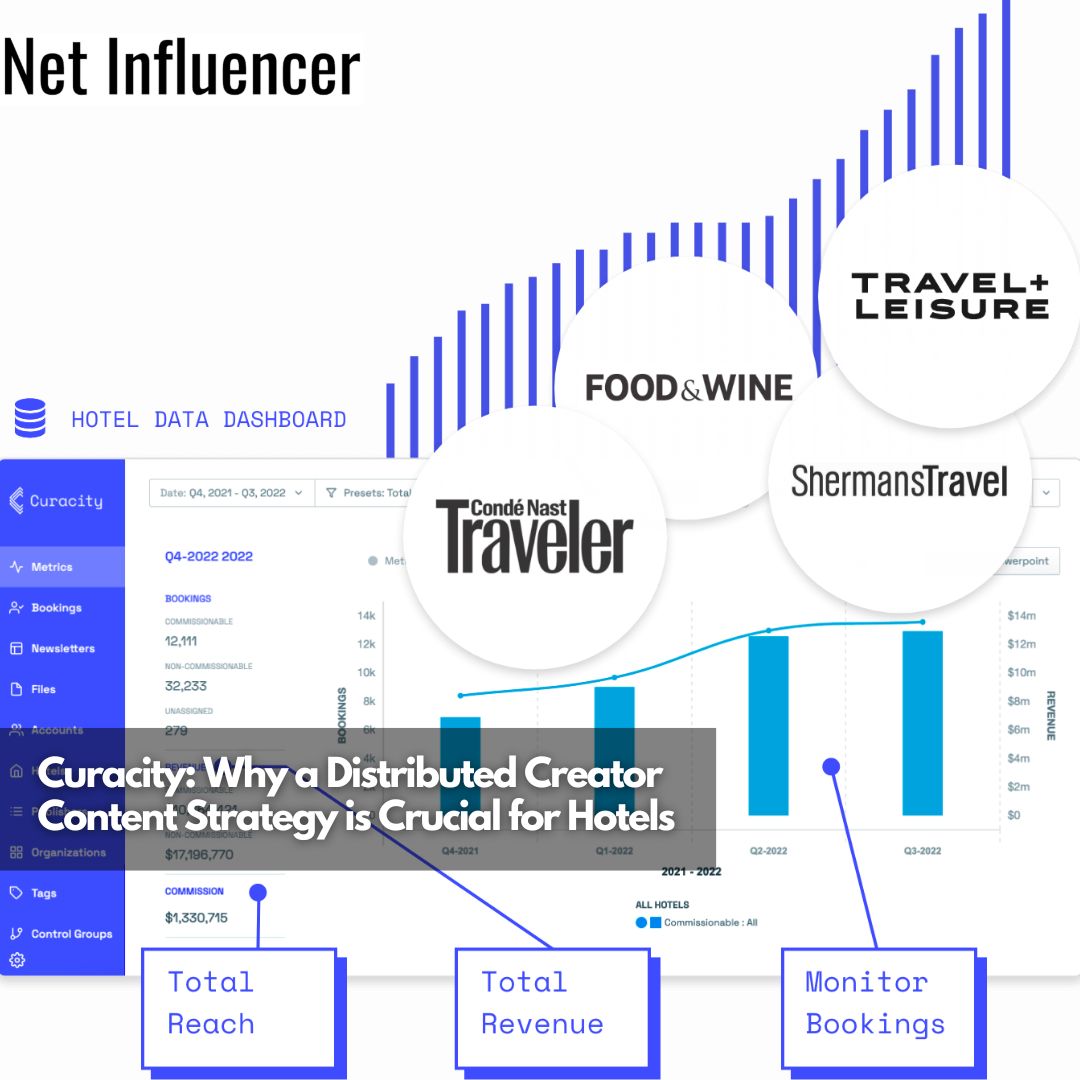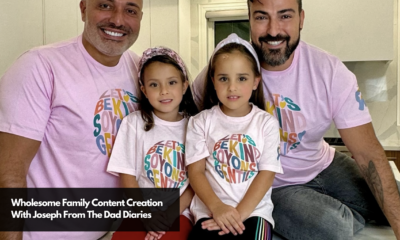Agency
Curacity: Why a Distributed Creator Content Strategy is Crucial for Hotels
Data is critical for any marketing campaign, but how can companies driving larger purchases, like hotel bookings, determine what is and isn’t working for them? After all, many social media users are unlikely to invest in a luxury vacation after seeing it just once on social media. Nick Slavin, CEO and co-founder at Curacity, explains why a distributed creator content strategy that takes a holistic approach to top-of-funnel data across all content platforms is key to tackling this challenge.
Curacity is a data analytics company helping hotels drive direct bookings by tapping into the power of multi-channel, original content.
Often, hotels and travel companies are unsure how to identify what marketing efforts yield ROI.
Curacity’s in-depth analytics provide hotels and travel companies with the resources to narrow down how guests engage with content created across Curacity’s network of vetted content creators including digital media brands, bloggers and social media creators.
The company boasts that guests driven by Curacity’s products spend 37% more on rooms and 20% more on the premises, such as food, beverage, and spa.
In this interview, Nick Slavin, CEO at Curacity, shares how the travel industry has a pressing need for distributed creator content strategy, how brands can achieve this strategy, and successful Curacity case studies.

What is a Distributed Creator Content Strategy?
Content creation takes an incredible number of forms, from blogs, social media posts, videos, podcasts, email newsletters, and more.
As a result, it’s incredibly challenging for brands to track which content creators and campaigns are responsible for driving bookings and sales. However, a distributed creator content strategy simplifies this process.
Nick shares, “A distributed creator content strategy is one that brands use to tap into the unique revenue-driving capabilities of each of those mediums and the platforms that they’re distributed on—platforms like Instagram, Tik Tok, blogging sites, and the email inbox. The best-distributed strategies are ones where brands are not only tapping into all content mediums and platforms but doing so in coordinated, thoughtful ways that are optimized to drive revenue.”
Essentially, a distributed creator content strategy allows brands to optimize their content plan by collecting in-depth data on what is and isn’t working so that content can be created thoughtfully and strategically to drive bookings, brand awareness, and more.
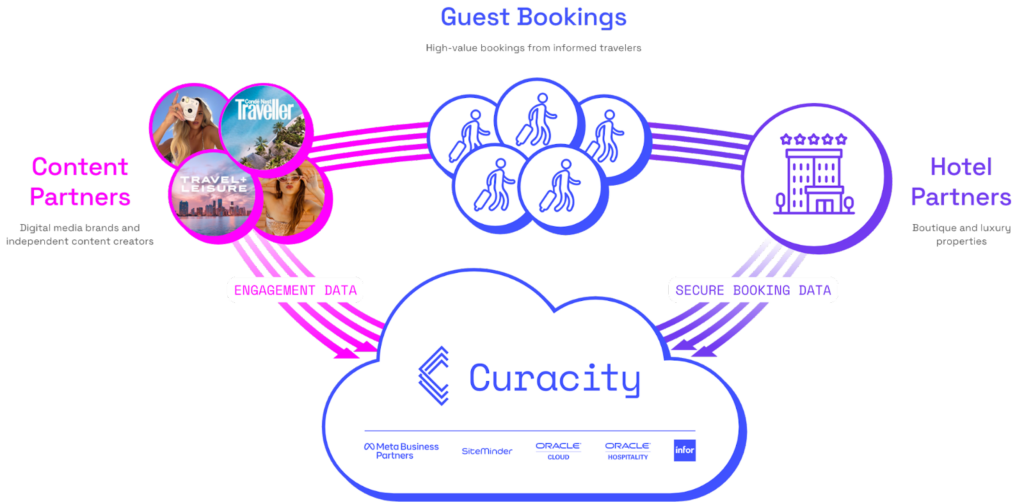
Why is a Distributed Creator Content Strategy So Important?
The sheer volume of content produced and shared online is expanding faster than ever, making approaching content creation with a strategic plan vital.
Nick explains, “Over the next three years, more data will be collected than the aggregate amount from the beginning of time to the end of 2022. More content will be created than ever before. There will be more creators, more content mediums, and more platforms where that content is distributed. Companies that want to reach their consumers need to understand how to properly use each platform and medium, and do so in a scalable, efficient way; and, most importantly, in a way that gets their message across more effectively than their competitors.”
Distributed Creator Content Strategy and the Travel Industry
So, why is a distributed creator content strategy especially important for the travel industry?
Nick references the adage, “I know that my marketing efforts work 50% of the time; I just don’t know which 50%.”
He adds, “Hotels have a very difficult time investing in top-of-funnel marketing content because they don’t know which 50% is effective; they also have very small budgets. Instead, they invest most of their customer acquisition dollars in bottom-of-funnel strategies, like putting themselves on Expedia, which—for luxury properties—isn’t great for the brand. That said, the hotel industry knows how important content creation is in attracting the right consumer, but most properties don’t have the expertise or budget to properly execute a distributed content strategy.”
Many brands’ marketing teams aren’t set up to handle and run a distributed content strategy. As a result, working with a company like Curacity is an essential step for many brands interested in distributed creator content strategy.
Think about it this way. You may see beautiful content shared about a specific travel destination or hotel while scrolling through Instagram or TikTok and think it’d be nice to visit there. But, most customers aren’t prepared to make a booking upon that initial inspiration.
This is one of the key challenges for hotel companies trying to determine what is and isn’t working. A distributed creator content strategy looks at the booking process more holistically–it works across all content channels.
It may take a customer seeing multiple articles or posts about a particular hotel before they book. However, this doesn’t mean the previous posts weren’t crucial to the company’s content strategy. A distributed creator content strategy collects data and accounts for the long-term strategy often needed for larger purchases, like booking a luxury vacation.
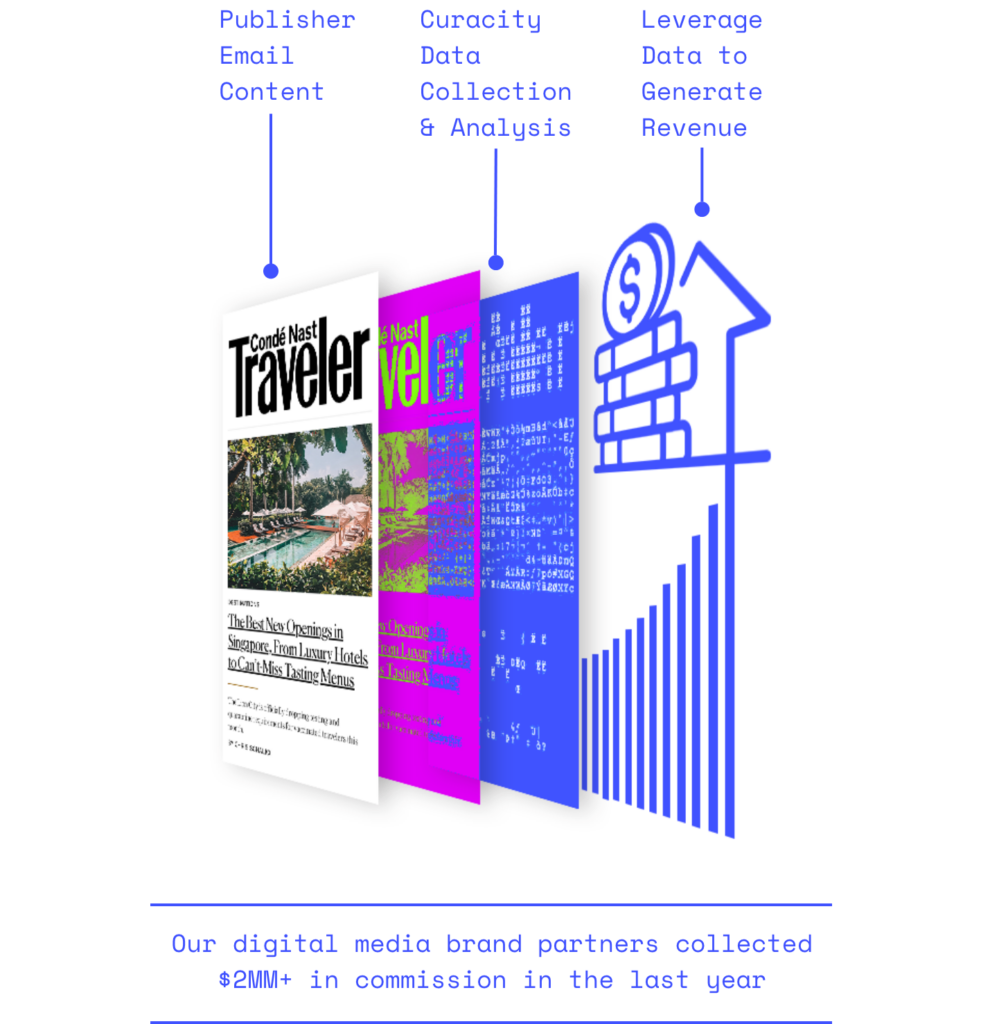
The Distributed Creator Content Process
So, what does this process look like? To get started, hotel and other travel companies that come onto the Curacity platform get immediate access to digital media brands and content creators who can start creating and distributing editorial content about the brand.
Nick shares, “We operate a handful of products at Curacity, all of which are built to get hotels access to turnkey, distributed content solutions. We have a network of digital media brands, a network of bloggers, and a network of over 20K social media creators. Each of these networks create content on our hotels and distribute that content to their audiences across the platforms that they know best.”
He adds, “Our key differentiator is that through our data work, we’re able to provide hotels with insight into all of the revenue that each piece of content is able to generate. We go far beyond cookies and last click solutions. In essence, we’re taking what hotels want—access to unique, multi-platform content—and applying the bottom-of-funnel revenue analytics that they need to invest in these channels. This, in turn, has enabled tens of thousands of social media creators, editors and bloggers to stay in hotels and write about their travels.”
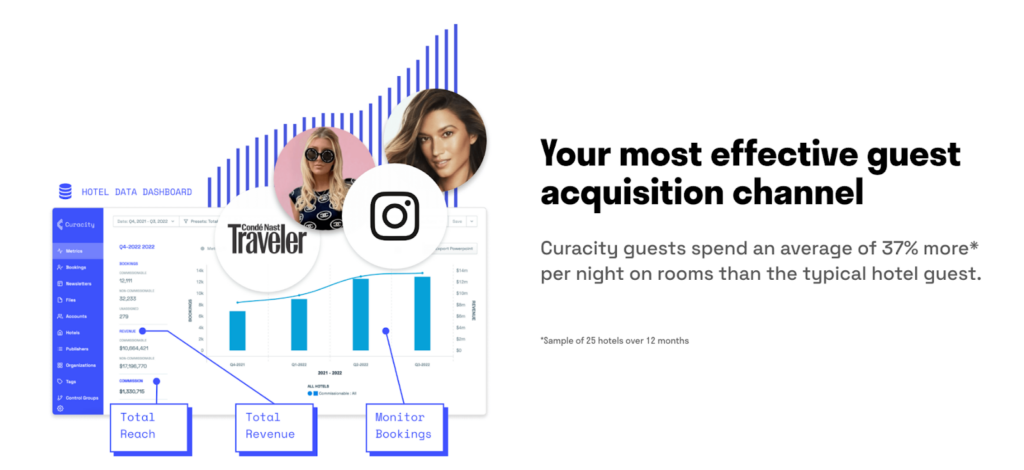
How Do You Think AI Will Evolve this Space?
AI technology is making huge waves in every industry, especially the creator economy.
Nick believes, “It’ll be transformative. AI will enable a tremendous amount of new content creation. Though I’m confident we’ll find an effective way to help consumers sort through AI-generated content, there will be many moments where that’s not yet figured out and where consumers will be overwhelmingly flooded with information. Curation and trusted content creators will only grow increasingly more important.”
This is great news for dedicated content creators making authentic content for their audiences, even as the volume of content continues to increase.


